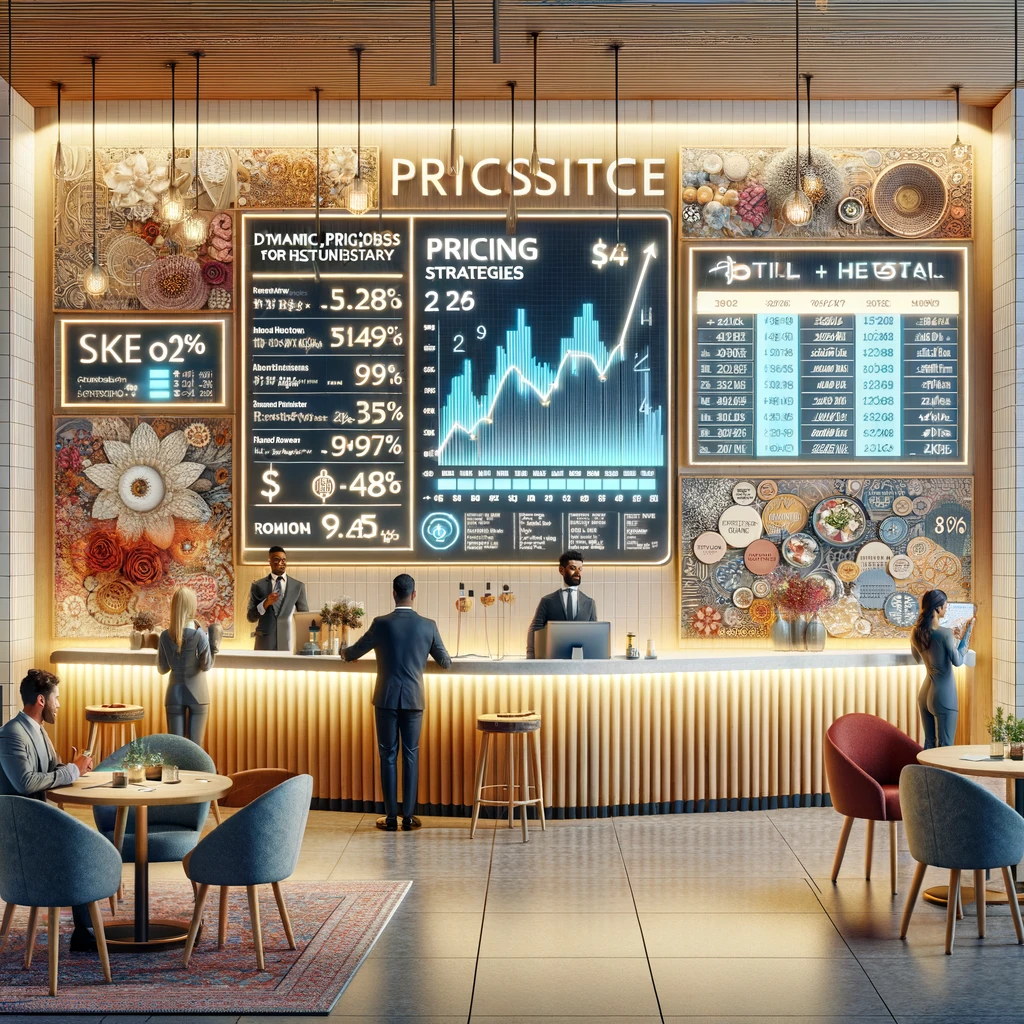Restaurants and hotels in the hospitality industry need to carefully consider their pricing strategies to attract customers, maximize profits, and stay ahead of the competition. In this comprehensive guide, we will research into the intricacies of pricing strategies specifically tailored for businesses in the hospitality sector. From menu engineering and dynamic pricing to revenue management techniques, this guide will equip you with the knowledge and insights to make informed decisions about setting prices that not only reflect the value of your offerings but also resonate with your target market. Whether you are a restaurant owner looking to optimize your menu pricing or a hotel manager striving to increase room revenue, this ultimate guide will provide you with the tools you need to succeed in the competitive world of hospitality.
Table of Contents
Types of Pricing Strategies
While there are various pricing strategies that can be employed in the hospitality industry, it is important for restaurants and hotels to understand the different approaches available to them. Recognizing the most suitable pricing strategy for your establishment can greatly impact your revenue and overall success.
| 1. Value-based Pricing | 4. Psychological Pricing |
| 2. Competition-based Pricing | 5. Dynamic Pricing |
| 3. Cost-plus Pricing | 6. Bundle Pricing |
Menu-based Pricing for Restaurants
Pricing your menu items effectively is crucial for restaurants as it directly impacts profitability. By strategically setting prices based on ingredient costs, competition, and perceived value, you can attract customers while maximizing revenue. It is crucial to regularly review and adjust prices to stay competitive in the market.
Room Rate Structures for Hotels
If you’re operating a hotel, the room rate structure you choose can significantly impact your occupancy rates and revenue. By offering various rate structures such as best available rate, advance purchase, and non-refundable rates, you can cater to different customer segments and increase booking conversions. Room rate structures should be designed to maximize revenue during peak times while also driving occupancy during low-demand periods.
Factors Influencing Pricing Decisions
Any successful pricing strategy in the hospitality industry is heavily influenced by a combination of internal and external factors. Understanding these factors is crucial for setting the right prices that maximize profitability while remaining competitive in the market.
Assessing Market Demand and Competition
Market research plays a pivotal role in determining the optimal pricing strategy for restaurants and hotels. By analyzing market demand and studying the competition, businesses can identify pricing trends, consumer preferences, and potential pricing gaps to exploit. This data-driven approach ensures that prices are set at levels that resonate with customers while also considering the pricing strategies of competitors.
Cost Considerations and Profit Goals
One of the most critical factors influencing pricing decisions is understanding the costs associated with running a restaurant or hotel. It is vital to consider expenses such as food and beverage costs, labor costs, overhead expenses, and desired profit margins when setting prices. By carefully analyzing costs and establishing clear profit goals, businesses can establish pricing strategies that cover expenses and generate profits.
It is important for businesses in the hospitality industry to strike a balance between cost considerations and profit goals when setting prices. By carefully managing expenses and understanding the desired profit margins, businesses can develop pricing strategies that not only attract customers but also ensure long-term financial viability.
Step-by-Step Guide to Implementing Pricing Strategies
| Identifying Your Unique Value Proposition | Tips for Integrating Dynamic and Value-Based Pricing |
Identifying Your Unique Value Proposition
While setting pricing strategies for your restaurant or hotel, it is crucial to identify your unique value proposition that sets you apart from competitors. Understanding what makes your establishment special will help you determine the right pricing strategy to attract and retain customers.
Tips for Integrating Dynamic and Value-Based Pricing
If you are looking to integrate dynamic pricing with value-based pricing in your hospitality business, consider offering personalized packages and deals based on customer preferences, seasonal demand, and market trends. Perceiving the value perception of your offerings will help optimize your pricing strategies for maximum profitability.
- Consider implementing dynamic pricing for premium services or peak hours.
- Regularly update your pricing strategies based on market conditions and customer feedback.
- Utilize data analytics to track consumer behavior and adjust pricing accordingly.
Understanding how to integrate dynamic pricing with value-based pricing is crucial for staying competitive in the hospitality industry. By carefully analyzing market trends and customer preferences, you can create pricing strategies that reflect the perceived value of your offerings while maximizing revenue potential.
The Ultimate Guide To Pricing Strategies For Restaurants And Hotels In The Hospitality Industry
Many Pros and Cons of Different Pricing Strategies are crucial to consider when setting prices in the hospitality industry. Here is a breakdown of the advantages and disadvantages of various pricing strategies for restaurants and hotels:
Advantages and Disadvantages for Restaurants
Assuming a dynamic pricing strategy can help restaurants maximize profits during peak hours by adjusting prices based on demand. However, this approach may lead to customer dissatisfaction if prices fluctuate too frequently.
Advantages and Disadvantages for Hotels
Pros and cons of setting prices for hotels and accommodations differ from restaurants. Hotels can benefit from implementing a tiered pricing strategy by offering different price points for various room categories. However, this approach may create confusion for guests when deciding which option to choose.
Disadvantages: Moreover, offering discounts or promotions for hotels can attract more guests during off-peak seasons, but it may devalue the brand and impact profitability in the long run.
Final Words
Following this ultimate guide to pricing strategies for restaurants and hotels in the hospitality industry, you are now equipped with the knowledge and tools to effectively price your offerings to maximize profits and stay competitive in the market. By understanding the various pricing strategies available and implementing them strategically based on your unique business goals and target market, you can navigate the complexities of pricing in the hospitality industry with confidence. Remember to continuously analyze your pricing decisions, monitor market trends, and listen to customer feedback to ensure your pricing strategies remain relevant and effective in driving business success.










